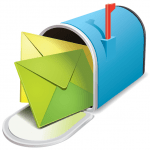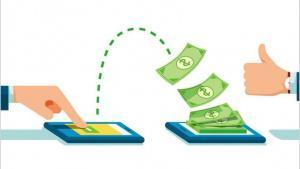Safekeeping Insurance Check Payments
Another in our series of #TIPS intended to help you deal with fraud, embezzlement, waste, and abuse in your dental practice.
Does your office receive insurance checks by mail?
 You are not alone. Many dentists still accept check payments from insurance companies, with payments arriving by mail.
You are not alone. Many dentists still accept check payments from insurance companies, with payments arriving by mail.
Did you know? A dishonest employee can remove insurance checks from your practice and deposit the checks into their own account.
Depositing via mobile or ATM systems will afford some anonymity to the employee, and unless the check is “flagged” by the automated check clearing systems, the check will be honored, and funds deposited into the dishonest employee’s account.
Millions of paper checks are processed each day, and a check is only “flagged” when something goes wrong, such as the check being illegible for optical scanning or insufficient funds to cover the amount.
That rarely happens with insurance checks. Insurance checks are formatted to fly though the optical scanning systems used by clearing houses, and there will always be sufficient funds to cover the amount.
Here are three things you can do to prevent theft of insurance checks from your office.
Option 1:
Have all your insurance checks sent to a “lock box”. Contact your bank for details.
“Lockbox banking” is a service provided by banks to companies for the receipt of payments. The bank goes to the box, retrieves the payments, processes them, and deposits the funds directly into the dentist’s bank account.
Option 2:
Restrict employees from accessing your mail. Pick up the mail yourself, open all the envelopes and remove the insurance checks. Separate each check from its payment summary (EOB).
You keep the checks and give your employees each payment summary (EOB) so they can post payments to the correct account.
Employees do not need the “physical check” to post payments, the payment summary contains all the information that is required.
At the end of the day, perform your usual “day end” routine. Compare the day end to make sure all the check payments were posted. Deposit the checks yourself at the bank, or use remote deposit (a “check scanner”) ti send check images to the bank for deposit. (ask your bank for details)
Option 3 (preferred)
Switch to Electronic Funds Transfer (EFT) and Electronic Remittance Advice (ERA).

EFT is a general term that refers to any transfer of funds via an electronic means instead of paper checks. EFT is analogous to “direct deposit” of employee paychecks.
An ERA is a standardized electronic version of a paper explanation of benefits (EOB)
Like a paper EOB, an ERA provides details about the amount billed, the amount being paid by the health plan, and an explanation of any discrepancies between the billed and paid amounts. Health plans are required to use standardized codes in ERAs to explain payment reductions and denials.
ERA and EFT were designed to operate together, and not all EFT payers offer ERA, so keep this in mind. Practices that implement ERA and EFT will maximize the benefits offered by these complementary transactions.
Getting Started
ERA and EFT adoption can seem overwhelming for a dentist, and there are many resources that can help.
Dentists can implement ERA and EFT in their own practice with some guidance, or hire someone to do it for them.
Do it yourself
- NACHA – The Electronic Payments Association https://healthcare.nacha.org
- EFT/ERA guides from Delta – Aetna – United Concordia
- American Dental Association EFT/ERA implementation checklist (members only)
Hire a Pro
The EFT Experts at Dental WebSmart can tailor a solution just for you.

Contact: Chris Haines
Website: http://www.dentalwebsmart.com/
DENTAL WEBSMART INSURANCE SOLUTIONS, LLC
Through Dental WebSmart Insurance Solutions, Chris provides her expertise to practices both, large and small across the country.
With 34 years of experience her education, practice management and clinical skills have allowed her to provide a modernized technology to her consulting services with a strong foundation in the practices Insurance systems by using EFT & ERA Technology. Teaching practices how to leave a paper based Insurance payment system to a 95% electronic based payment system to achieve better cash flow.

